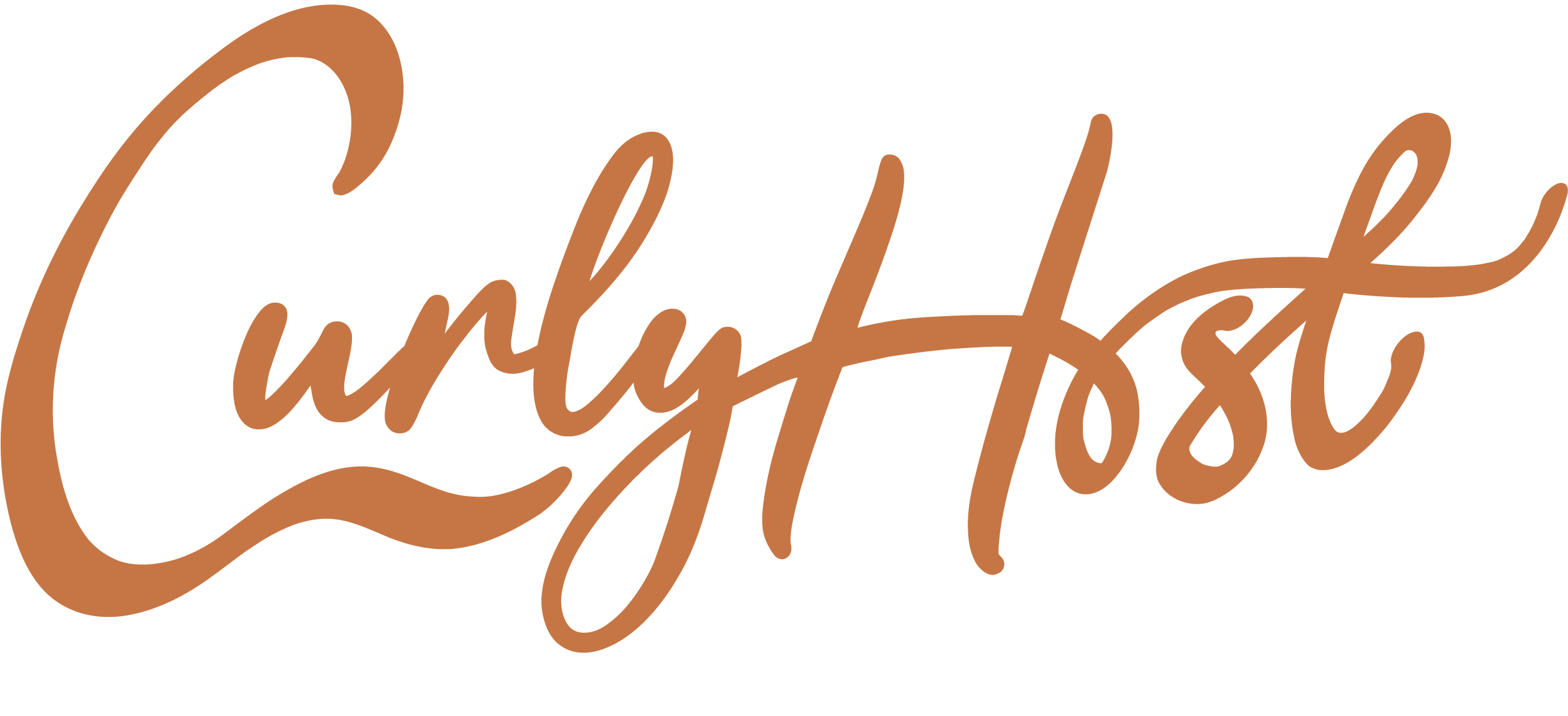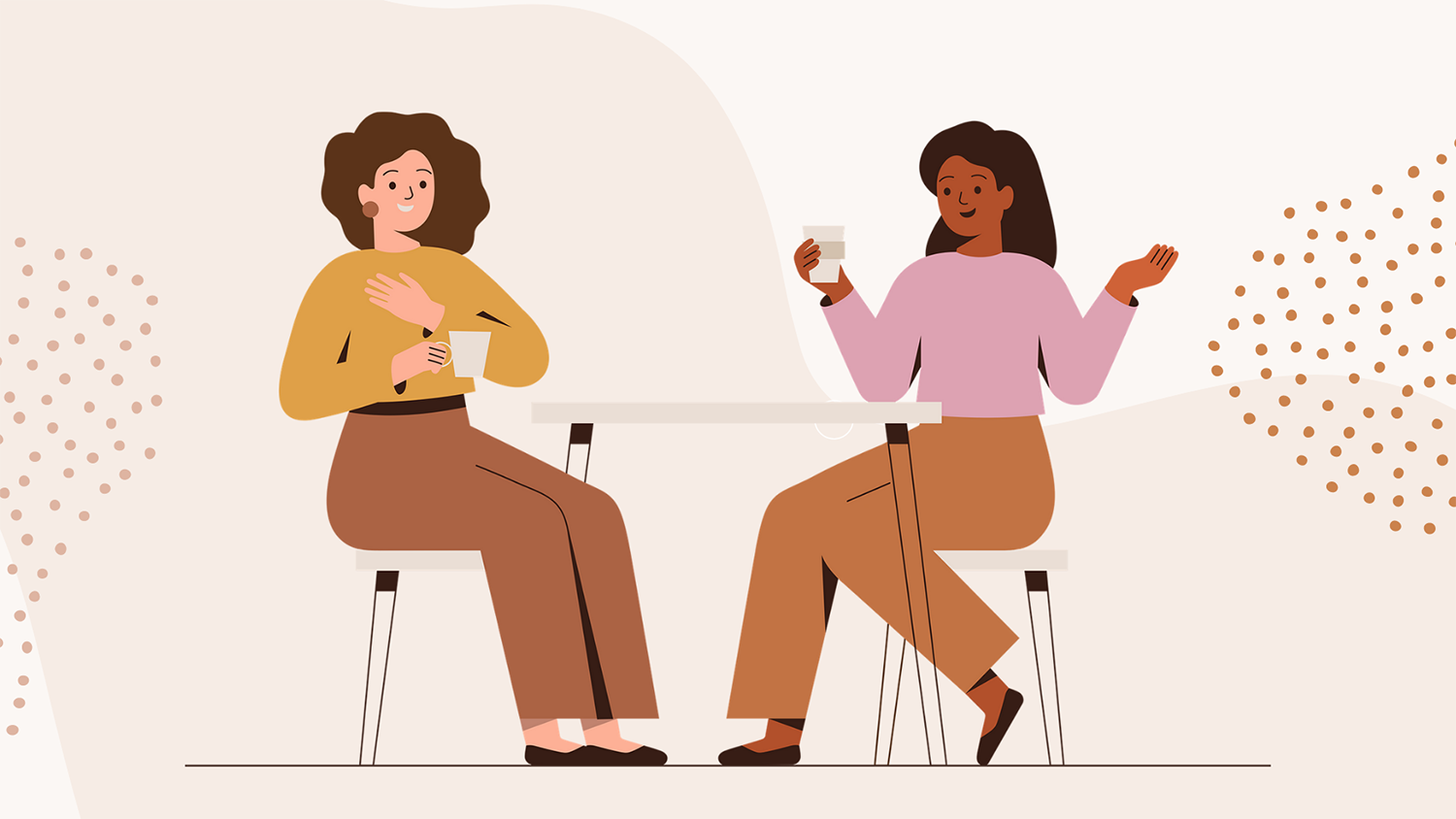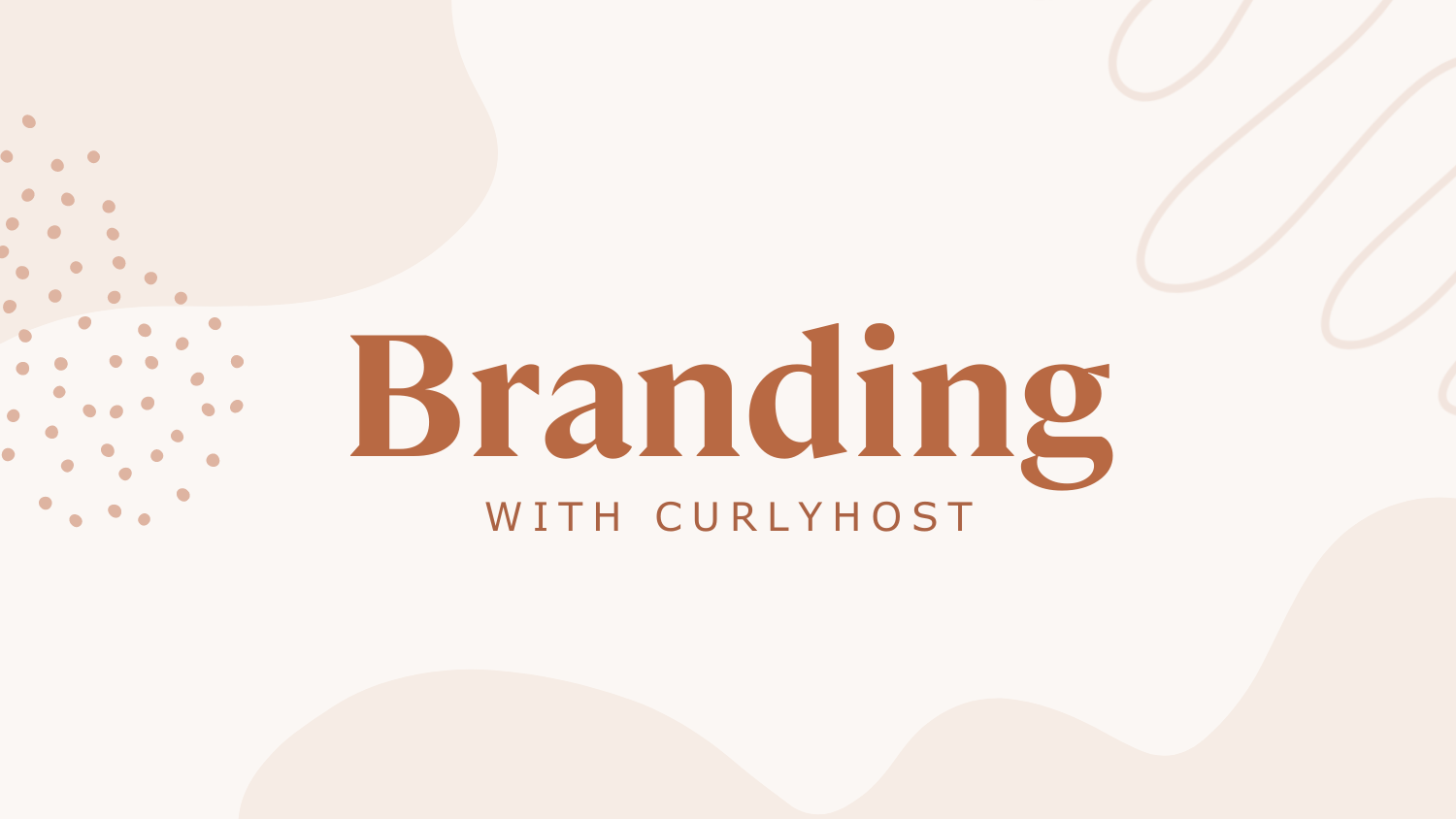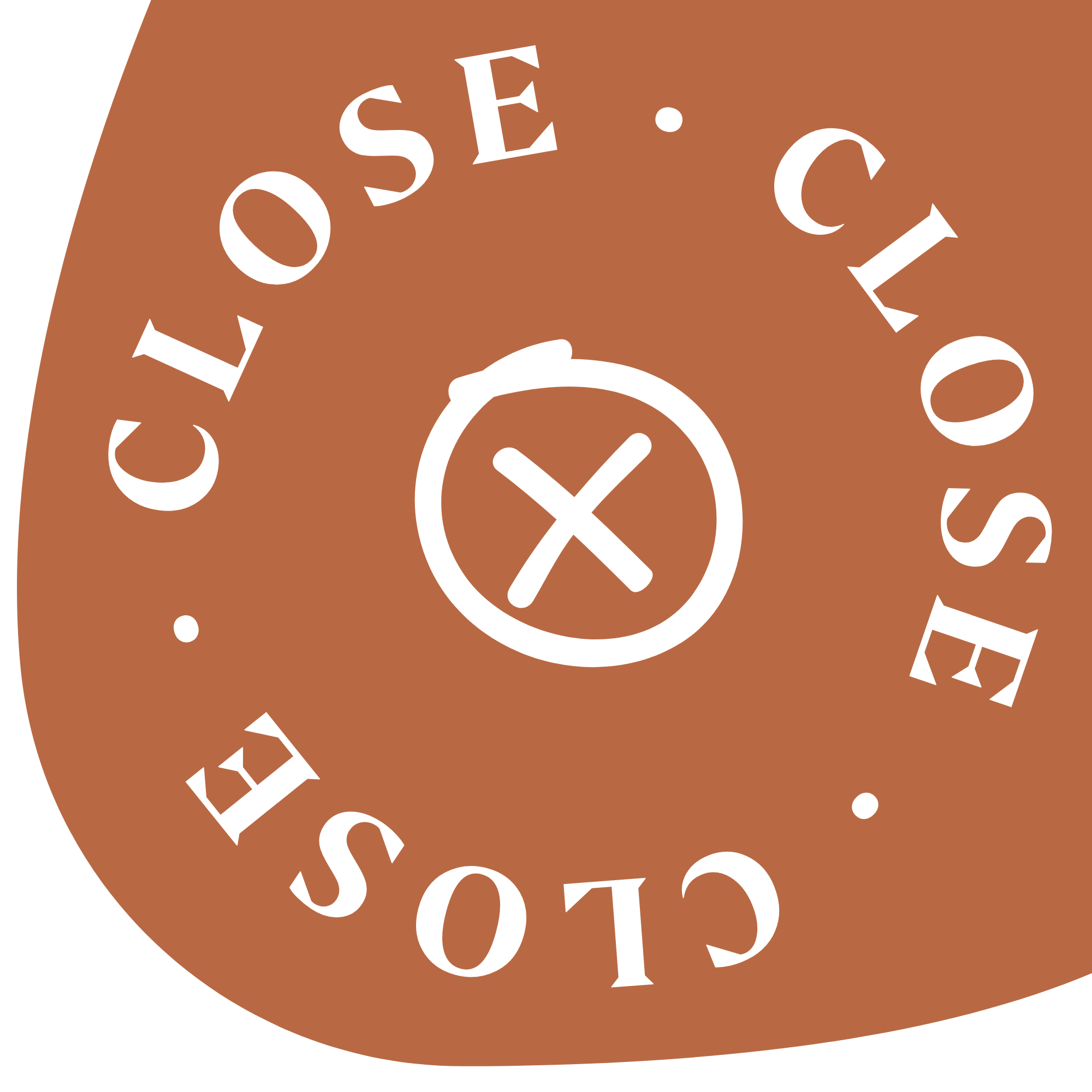It sucks being bad at stuff. But you know what doesn't suck? Trying to do something that you've never done before.
Andrea Napierkowski
Being Okay at Being Bad at Dancing...
One-two. One-two-three. One-two. One-two-three.
A friend invited me to her dance class. She thought I’d fit right in. We both did.
“Okay, stop! Arms up! Move to the center. Back out. To the center. Back out. Arms down! Now, move around the room!”
These all felt like grandiose instructions compared to what I had anticipated. Far more choreographed than my leaps around my kitchen.
“Grab a partner and swing them around!”
Shoot, do you give good eye contact when you swing someone around? Where are you supposed to hold them? Should I be smiling? My eyes kept darting around the room, trying to figure out what I was supposed to be doing, making uncomfortable eye contact along the way.
Each woman engaged in the space with such confident gestures. I didn’t know how I was supposed to act or how big my movements were supposed to be. I felt nervous about bumping into someone and kept my footwork reserved as I navigated where I should gallivant to next.
I wanted to say, “Hi, I’m new here… What confidence level should I be exhibiting today?”
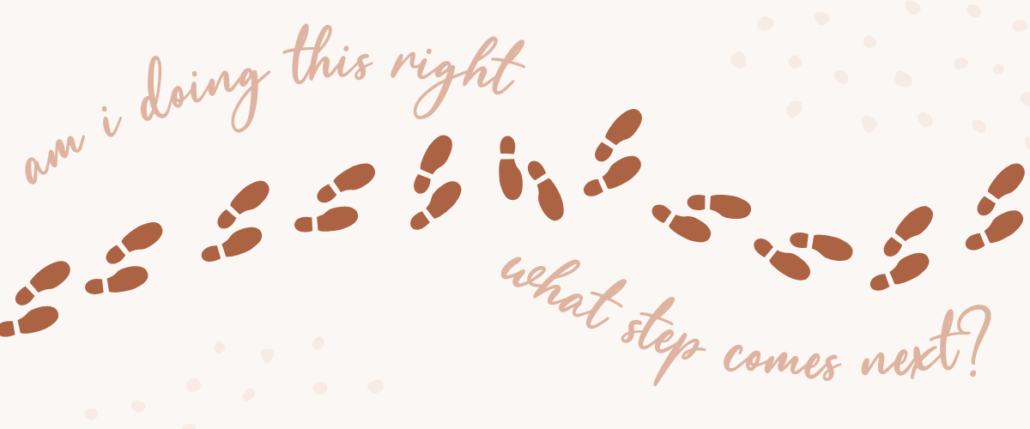
One-two. One-two-three. One-two. One-two-three.
“Stop. Move your arms up and out to the left! Now move around the room. Stop! Move your arms to the right! Now move again!”
See, I consider myself a great dancer. I love to move. I love engaging my body to a rhythm when it takes over me. I put my earbuds in and galavant throughout my house as if I’m in a music video. I go strong, and then I take dramatic pauses… to do a few dishes (Pro-tip: dancing makes dish-doing more fun!). In short, I usually feel like myself when I dance.
But in that dance class, with the bright lights and open floor plan, I looked like a grocery cart with one wheel pulling the whole cart erratically down the aisle as my arms flailed in bursts of triumphant gestures and backed down again without direction.
One-two. One-two-three. One-two. One-two-three.
One woman whispered, “You’re supposed to do it with a bit of skip – like this – in the middle.”
I started whispering back (loudly) that I was “actually very good at dancing.” I just didn’t know how the steps and arms and body were all supposed to move at the same time together. Her polite head nod as she danced away underscored that she may not have been able to imagine all of the impressive dance moves I exhibited at home.
I didn’t have a dance partner to hide behind or a crowded club vibe to blend into. My lack of rhythm felt so blatant. I felt so exposed. When I caught glimpses of myself in the mirror (those darn mirrors), I couldn’t help but shake my head and laugh at the miracle of no one being struck by my leaps and bounds.
“Now, find a partner and promenade around the room! Do a funky walk and really get into it!”
Oh, good grief!
Grasping the soft skin of an older woman’s arm, I found myself both bothered with the forced intimacy of the experience and relieved with the stability that it offered me. “Save me!” my nervous smile cried out.
I was able to let go for a moment and step away from the feeling of embarrassment in my body. I closed my eyes and focused on my breath… and I just “funky walked” around the room. When the music shifted, I opened up my eyes and reverted to my clumsy footwork and nervous glances.
When the class was over, the instructor called out, “Thank you to those that didn’t know how to dance but still got out there and had fun and moved with us!”
Oh boy. She could have just as well grabbed my arm, raised it like a champion, and called out, “Behold! A woman who makes the rest of us look like ballerinas!“
The reality is, I just wasn’t used to being watched while being bad at something, and I couldn’t move past it. The friend that brought me confided that she thought my “funky walk” was the best in the room (Yay me…?), and that felt good, but a far cry from how I saw myself before the class.
Glossophobia
I hate being bad at stuff. My heart starts racing, my chest tightens, I become flush, I look for an escape route, and I vow never to put myself in a situation like that again. The watchful gaze of another person can intensify the feeling.
A majority of the population experiences some level of anxiety about being bad at stuff in front of other people (somewhere around over 75%, actually). Fear of public speaking, also known as glossophobia, is the most common form of phobia out there, exceeding the fear of spiders, heights, or even death.
Yes, people fear public speaking more than death!!
But look, the reality is that we all hate being bad at stuff. We gravitate toward habits and activities that we’re naturally inclined to and avoid things that might bruise our egos and lead to embarrassment. Most of us cope by creating safe and tested routines to navigate the world without being confronted by the things we might be bad at.
But you can’t avoid anything that you could be bad at while also avoiding some things you could be really good at if you gave it some focused attention.
Finding Your Swagger
Your swagger is an inner knowing of who you are and what you are capable of. It’s something that you earn through life experience. It’s the knowledge that you have made it through 100% of your bad days and that you are on the right path for the best version of yourself ahead. It is the driving force behind your sense of self and how you fit in the world.
Swagger is the essence of who you and the swagger that you develop through facing uncomfortable situations will always be more meaningful than the swagger of an accolade given to you without it. Your swagger involves an internal knowing that you’re good at something that you worked hard at.
Your swagger can be expressed in your clothing style, how you move, how you sound, how you eat, how you live, and what you choose to do with your hands. New experiences that scare us can lead to a stronger sense of swagger. Getting over the fact that we may have a few embarrassing moments in the pursuit of an authentic form of self-expression shouldn’t stop us from trying something new. Embarrassment doesn’t have to hold the emotional weight that it does.
A New Way To Play
I cried when I first watched this video as it felt like I was finally seen. I’m athletic, but I’m just terrible at sports, and I loved the joyful grins on everyone’s faces as they attempted it anyway.
“Here’s to going for it and being terrible,” The ad campaign says. Instead of winning, Nike shows the spirit of giving it a shot and enjoying it even if you don’t win. It’s exceptionally brilliant, obviously much needed, begging the question, “how come it took until 2021 to come up with this healthy message about trying?”
With this, Nike is inspiring people to try new things, to embrace the “funky walk” by telling us, “You know what doesn’t suck? Trying to do something that you’ve never done before.”
Dancing in my house was so different from dancing in front of other people. Getting over the fact that the other women were watching me shouldn’t have prevented me from having fun with it.
Brand Identity = Brand Swagger
Your brand needs to swagger, too. Your brand swagger needs to be based on a deep inner knowing about where it has been, where it is going, and the rightness in its actions. It’s not just a logo, typeface, and set of colors. You may find your brand’s swagger by playing new and trying a messaging strategy that feels embarrassing to you if you’ve not explored different methods of marketing. Not used to posting on Facebook? Try being bad at it until you get good at it. Your brand needs to be okay being bad at stuff to develop the right messaging and get to the good stuff.
Express Your Truth
Being okay at being bad at stuff may help you develop forms of self-expression that you might not have created otherwise had your ego not gotten in the way. Our identities and methods of self-expression are not fixed in stone. Social identity can be fluid, depending on the space you are in, and the ways you express yourself can breathe and evolve as often as your moods do.
My swagger is a deep inner knowledge of where I’ve been and a vision for where I’m going. I want to stand for what is true. I want to engage in ideas, feelings, and actions that are true. My swagger is an inner knowing that my experiences have given me unique insight and valuable lessons to share. I think everyone has thoughtful insight and lessons to share as well. What is your swagger waiting to express?
